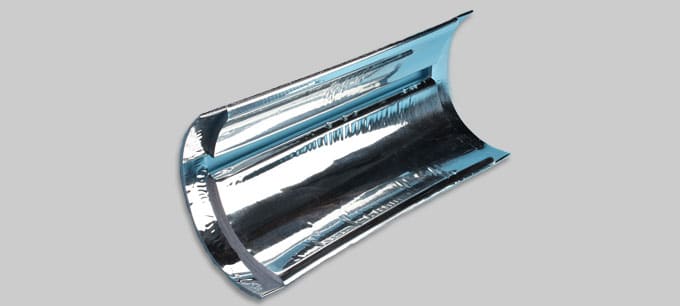
Summer is officially over and Autumn has arrived. The crisp air and the beautiful leaves make this is a favorite season for many people here in Minnesota. Unfortunately, we’ll have freezing temperatures soon enough. This got us thinking about thermal insulation.
What Is Thermal Insulation?
Thermal insulation is material that helps reduce the transfer of heat between objects. It keeps warm air from escaping rooms and vehicles, which makes it a great way to reduce energy costs in buildings, automobiles and airplanes.
Insulation is mandatory for winter months, but that’s not all it’s good for. Thermal insulation can also be used to:
- Protect flammable objects from heat, and
- Protect against the change of the physical and chemical properties of nearby objects, which can cause damage and possibly injury.
What Materials Make Good Thermal Insulators?
In order to limit the transfer of heat and protect machines and people, you want flexible materials that can be shaped and customized to your specific designs. Some of the best materials for thermal insulation are closed cell foams and urethane foams.
Closed Cell Foams

Closed cell materials are manufactured with air bubbles trapped within the material. The trapped air increases the insulation capability, resists liquids and creates a stronger and denser material. This type of material is ideal for sealing and is great for industries such as marine, HVAC and automotive.
Closed cell sponges are ideal for applications requiring a physical barrier such as gaskets, vibration dampeners, isolators, mounting pads, bumpers and spacers, seals and weather stripping.
Urethane Foams

Open cell microcellular urethane foam, such as Rogers PORON®, is often used in the development of gaskets, seals, protective gear, sportswear and more. Designers and engineers prefer using PORON for its ability to cushion, pad, compress and seal.
PORON urethane foam is able to endure temperatures from -40°F to 194°F and has many other awesome benefits. It’s even been used in the Hubble Space Telescope since its launch in 1990. Engineers used PORON to prevent leaks and contamination through the telescope’s brackets and door gaskets.
Thermal Insulation Can Be Used With Adhesives And Laminates
Closed cell foams and urethane foams are excellent thermal insulation materials, and they can also be used with pressure sensitive adhesives and laminates.
Pressure Sensitive Adhesives (PSAs)
Pressure sensitive adhesives (PSAs) and foam tapes are used to attach the surfaces of two substrates. There are many different types of PSAs available with a range of physical properties. The most common types of PSAs are rubber, acrylic and silicone.
Lamination
Lamination is more than just an added layer. Your parts can last longer and perform better with just a thin coating of laminate film. Lamination adds protection, increases strength and boosts durability and resilience.
Need Custom-Fabricated Thermal Insulation Materials? Contact Us Today!
American Flexible Products is a nation-wide converter of flexible materials—from foam to rubber to silicone and more. Every product is custom-cut and shaped to your design specs by our materials engineers.
Call 952-368-4225 or fill out our form below. Our material experts will help guide you through our process and give you a free quote.
[contact-form-7 id=”1783″ title=”Contact AFP”]




